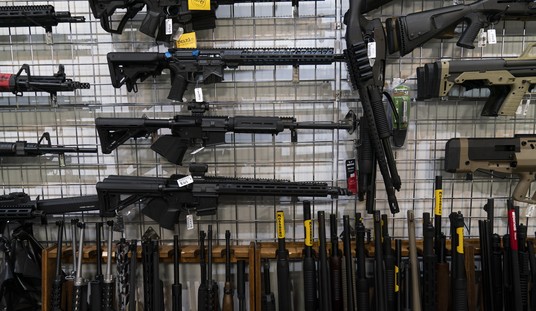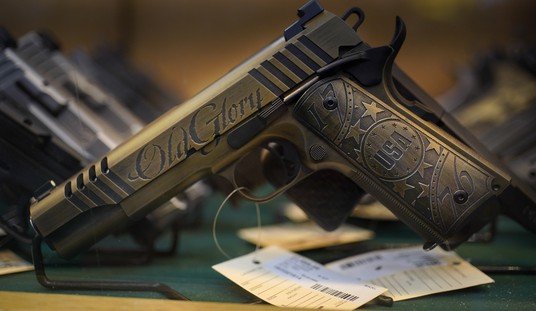Charles Kinsley, the group home behavioral therapist shot by a North Miami SWAT officer who was aiming at autistic man holding a toy truck, has filed a federal civil rights lawsuit against the officer:
Yesterday Kinsey filed a lawsuit against Aledda in federal court for excessive force, false arrest, and violating his civil rights.
“Officer Aledda violated Mr. Kinsey’s clearly established Fourth Amendment right to be free from excessive force during police seizures when he shot Mr. Kinsey in the leg,” the complaint says.
Before getting shot July 18, Kinsey was seen in a cell-phone video lying on his back with his hands in the air, begging cops not to shoot him. Kinsey, a behavior technician at the Miami Achievement Center for the Developmentally Disabled, had been trying to help a 26-year-old autistic man, Arnaldo Rios, who’d left the center. Rios had been holding a toy truck while walking through the streets of North Miami, which prompted a 911 caller to alert North Miami Police that Rios had possibly been walking around with a gun.
After he and other officers surrounded the two, Aledda eventually fired. Though there is no video evidence showing the moment he was shot, Kinsey maintains that after Aledda fired his rifle, he asked the cop why he shot him.
“I don’t know,” Kinsey says the cop responded.
After the shooting, Dade County Police Benevolent Association President John Rivera, who heads the union representing Aledda, claimed the officer was actually trying to hit Rios, the autistic man, to “protect” Kinsey. Rivera claimed Aledda simply missed.
Kinsey’s shooting sparked a continued wave of protests throughout the city and led to the suspension of Commander Emile Hollant after investigators said Hollant gave “conflicting” statements about the shooting.
In his lawsuit, Kinsey faulted North Miami Police for being too quick to whip out assault rifles and aim them at him.
“Several officers, including Officer Aledda, immediately retrieved assault rifles from the trunks of their cars and approached Mr. Kinsey in a military-style formation,” the complaint reads.
“All officers, including Officer Aledda, were close enough in proximity to hear Mr. Kinsey’s statements, and one officer even announced over the police radio, ‘It’s a toy truck, he’s saying it’s a toy truck,'” Kinsey’s suit reads.

I’ve posted my unreserved criticisms of the police response previously, but they bear repeating to grasp just how bad this shooting appears to be from both a legal and tactical perspective.
Here’s our initial take, based on the best initial information we had at the time.
We have an autistic man (Arnaldo) who is clearly oblivious to the world around him, holding a shiny sliver object in his hand. While you may be able to mistake the truck itself for the slide of a handgun, it’s also readily apparent by the way that he is holding the object that it does not have any sort of a grip. I’m no detective, but this is what my friends in law enforcement might call “a clue.”
But this autistic man isn’t a cipher the officers have to figure out entirely on their own. Mr. Kinsley, Arnaldo’s behavior therapist at his group home, is with him, laying on his back (no doubt following police commands) with his hands in the air, calmly explaining to officers what is really going on.
There’s every reason for an officer to make a cautious approach here to get a better look and verify that the non-gun in Arnaldo’s hand truly is a toy truck, and to call the incident to a close.
But that’s not what happened.
A shot rings out.
Mr. Kinsley is hit in the leg.
Officers then make their approach and cuff both Arnaldo and Mr. Kinsley.
If Mr. Kinsley’s claim is true and the officer’s response to Mr. Kinsey’s obvious question of, “Why did you shoot me?” is the answer of, “I don’t know,” then it seems we’ve got a very serious training problem here.
It’s one for an officer to fire and make a center of exposed mass hit on a suspect and be able to clearly articulate why they fired a shot, even if it later turns out that the suspect was only holding a brush or a cell phone or nothing at all.
That’s clearly not what happened here.
Both the shot placement and the officer’s alleged response strongly suggest that a poorly trained officer was roughly pointing a gun in the general direction of Arnaldo and Kinsley and was looking over the top of his weapon with his finger on the trigger. If the shot was fired by the officer with the patrol rifle, it also means that the safety was off, which it should not be if the officer was competently trained.

But then more information came to light: it wasn’t a negligent shot, but what appears to be grossly incompetent decision-making leading to a train wreck of a shooting.
Let’s give the officer—whom we now know is a member of the North Miami SWAT team, thanks to John Rivera of Miami-Dade’s Police Benevolent Association—the benefit of the doubt, and assume that he didn’t hear Mr. Kinsley explain that his autistic patient was holding a toy truck. Let’s give the officer the benefit of the doubt, and assume that officer really thought that Mr. Kinsley’s life was being threatened by an man with a gun.
If that is indeed the case, why did this SWAT officer take a position that would put Kinsley in the line of fire? Why did this officer fire a shot with his weapon with the Kinsley’s patient in line with Kinsley, when SWAT officers should know that both handgun and rifle bullets can and will overpenetrate and put Mr. Kinsley’s life at a high degree of risk, even if he made the shot? Moving just 15-20 yards to the left or right (if allowed by terrain and obstacles) would give him a much safer shot.
Why did the officer fire from a position so unstable that he couldn’t hit his target even once in three shots? He clearly exceeded his level of competence, which is especially terrifying when you consider that SWAT officers, even more than that patrol officers, need to know their competencies with their weapon systems due to the high-risk nature of their work.
Put bluntly, this story looked bad this morning when it sounded like it was a negligent discharge shooting.
Now that the police are telling us that this was an incompetently executed intentional shooting, it’s utterly terrifying.
We’ve covered hundreds of defensive gun uses here at Bearing Arms, and dozens of officer-involved shootings. In many of those instances, officers have been justified. In others, they clearly were not. In some they made a tough judgement call
In most of those officer-involved shootings, however, the officers were acting to clear threats under time pressure had had to make an immediate deadly force decision.
That all seems to be lacking here.
Neither Arnaldo Rios (the autistic man playing with a toy truck) nor Charles Kinsley were in a position to threaten anyone, and if Officer Alleda really thought Rios was a threat to Kinsley, then he had a responsibility to take an angle where he could potentially take a shot without putting Kinsley in the line of fire.
Clearly, that isn’t what happened here.
Fortunately, no one died.








Join the conversation as a VIP Member